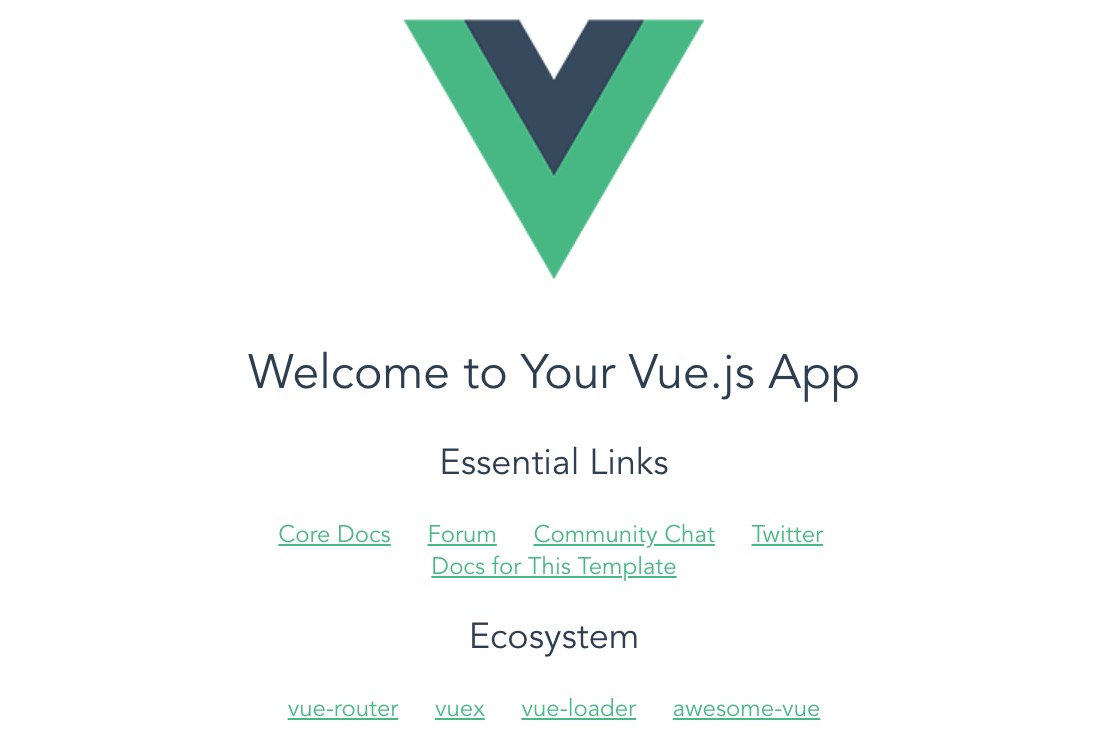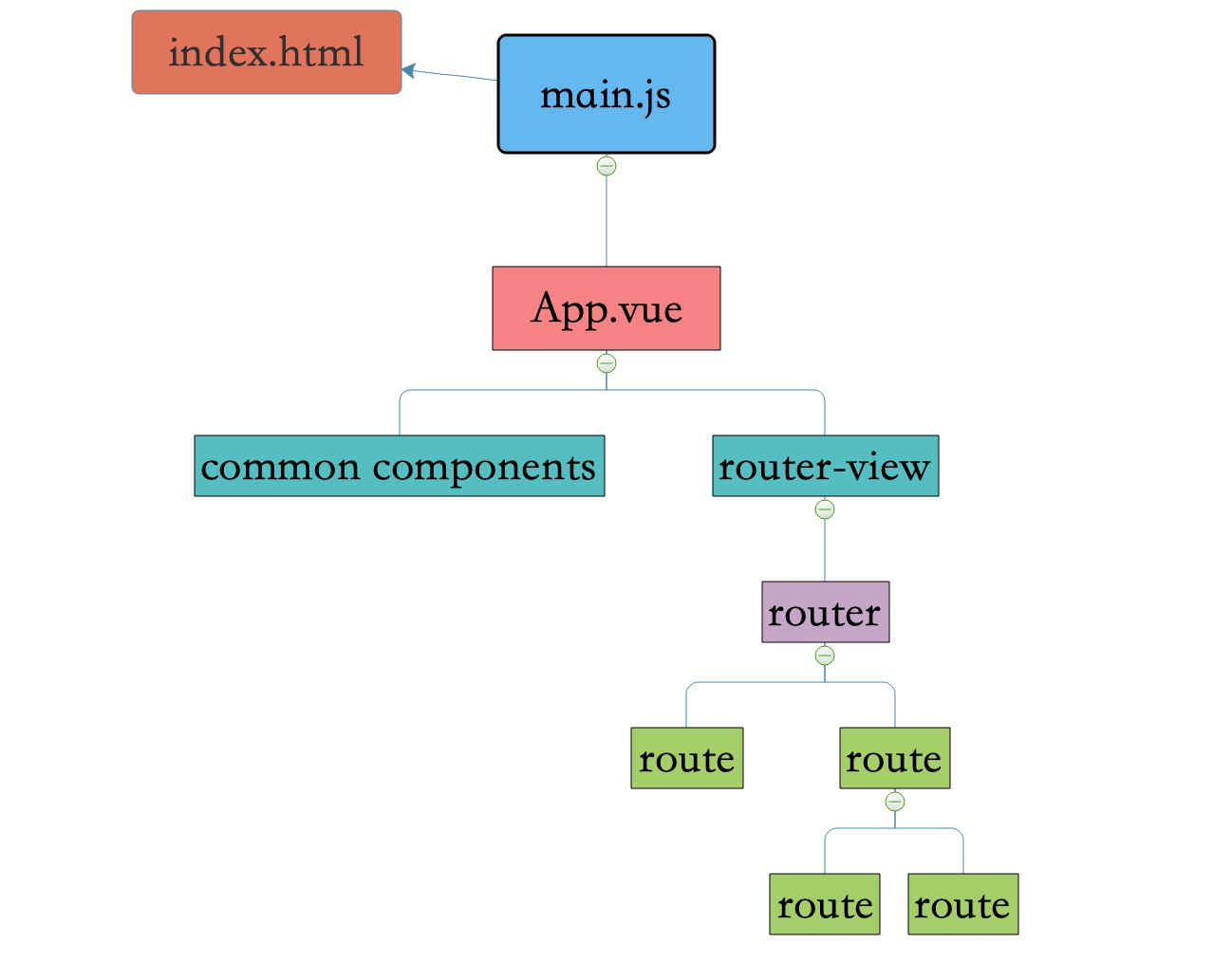构建一个 vue 项目最简单的方式就是使用脚手架工具 vue-cli 。前端的三大框架都有自己的脚手架工具,其作用就是用配置好的模板迅速搭建起一个项目工程来,省去自己配置 webpack 配置文件的基本内容,大大降低了初学者构建项目的难度。这节我们看看如何使用 vue-cli 构建 vue 项目以及对构建项目的具体分析。
一、环境搭建
node 和 npm 是必不可少的,这里不再介绍。
1、安装 vue-cli
$ npm install -g vue-cli
检查是否安装成功:
$ vue --version
3.3.0
2、构建项目
$ vue init webpack hello-vue
初始化的过程中,会有一个交互式的选项让你选择项目的一些配置,根据项目需求选择即可。为了方便后面几篇教程的演示,可以统一选择以下选项:
? Project name hello-vue # 项目名称
? Project description A Vue.js project # 项目描述
? Author Deepspace # 作者
? Vue build standalone # 运行+编译时
? Install vue-router? Yes # 安装 vue-router
? Use ESLint to lint your code? Yes # 使用 ESLint 作为代码规范
? Pick an ESLint preset Airbnb # 选择 Airbnb 的代码规范
? Set up unit tests Yes # 安装单元测试
? Pick a test runner karma # 测试模块
? Setup e2e tests with Nightwatch? Yes # 安装 e2e 测试
? Should we run `npm install` for you after the project has been created? (recommended) npm # 包管理器,npm
构建完成之后,会提示构建成功信息:
# Project initialization finished!
# ========================
To get started:
cd hello-vue
npm run dev
Documentation can be found at https://vuejs-templates.github.io/webpack
3、启动项目
$ cd hello-vue
$ npm run dev
项目默认会在 8080 端口启动,如果端口有占用,会自动调整端口。打开浏览器输入:http://localhost:8080,会看到构建的项目的主页:

4、目录结构
使用编辑器打开(推荐使用 VSCode),下面具体看看目录结构:
package.json :
{
"scripts": {
"dev": "webpack-dev-server --inline --progress --config build/webpack.dev.conf.js",
"start": "npm run dev",
"unit": "cross-env BABEL_ENV=test karma start test/unit/karma.conf.js --single-run",
"e2e": "node test/e2e/runner.js",
"test": "npm run unit && npm run e2e",
"lint": "eslint --ext .js,.vue src test/unit test/e2e/specs",
"build": "node build/build.js"
}
}
在 package.json 中,根据我们在构建项目的时候的选项,有以下几个命令。
npm run dev:项目开发阶段,项目启动的命令;npm run lint:使用eslint检查代码格式;npm run test:单元测试和e2e测试;npm run e2e:e2e测试;npm run build:开发完成后执行,会把我们的源代码编译成最终的发布代码,生成在项目根目录中的dist文件夹下(初始化项目时不会生成)。
config: 保存一些项目初始化配置。
build :里面保存一些 webpack 的初始化配置。
index.html : 是我们的首页。index 很多时候都被预设为首页,像 index.htm,index.php 等。
src : 保存项目源代码的地方,我们下面会详细分析该文件夹里的文件。
二、代码分析
Vue 的核心架构分为两个部分:路由和组件,其实 React 也是一样的。我们在切入一个项目的时候,都是从这两个点出发。下面我们具体看看 src 文件夹。
1、入口文件
如果我们打开项目根目录下 build 目录中的 webpack.base.conf.js,会看到这样的代码(第22行):
module.exports = {
context: path.resolve(__dirname, '../'),
entry: {
app: './src/main.js'
},
// ...
}
说明我们的入口文件就是 src 目录下的 main.js 文件。看看代码:
// The Vue build version to load with the `import` command
// (runtime-only or standalone) has been set in webpack.base.conf with an alias.
import Vue from 'vue';
import App from './App';
import router from './router';
Vue.config.productionTip = false;
/* eslint-disable no-new */
new Vue({
el: '#app',
router,
components: { App },
template: '<App/>',
});
看看这里面做了什么事情:
- 引入
vue并起名叫作Vue - 引入 根目录下的
App.vue文件(后缀名可不要) - 引入
router文件下的index.js文件(文件夹后没有具体的文件,默认引入的就是index.js文件) - 通过
new实例化Vue实例 ,实例化的时候声明了几个属性:el:'#app':意思是将所有视图放在id值为app这个dom元素中,也就是项目根目录下的index.html中的那个div:<div id="app"></div>;components: { App }:意思是将上面引入的App.vue文件的内容将以<App/>这样的标签写进<div id="app"></div>中;
2、App.vue
通过入口文件中做的事情,我们其实已经知道 App.vue 的作用了:单页面应用的主组件。所有页面都是在 App.vue 下通过路由进行切换的。所以,我们可以理解为所有的路由(route)也是 App.vue 的子组件。我们看看代码:
<template>
<div id="app">
<img src="./assets/logo.png">
<router-view/>
</div>
</template>
<script>
export default {
name: 'App',
};
</script>
<style>
#app {
font-family: 'Avenir', Helvetica, Arial, sans-serif;
-webkit-font-smoothing: antialiased;
-moz-osx-font-smoothing: grayscale;
text-align: center;
color: #2c3e50;
margin-top: 60px;
}
</style>
这里需要提一下:
node之所以可以识别出*·vue格式的文件,是因为webpack在编译时将*.vue文件中的html、js、css都抽出来形成新的单独文件。可通过npm run build命令编译源代码,查看dist文件下的文件来验证。
App.vue 的内容分为三个部分:<template>...</template>、<script>...</script>、<style>...</style> ,分别在这三类标签里面写入结构、脚本、样式。
我们先从 <template> 看起:里面一个 div 包裹着 img 标签和 router-view 标签。前面提到过: App.vue 是单页面应用的主组件。对照着前面在浏览器中打开的应用主页面,img 标签就是页面上方的 Vue 的 logo。那下面的内容去哪了呢?和 <router-view/> 有关系吗?这就要去看路由了。
3、router/index.js
import Vue from 'vue';
import Router from 'vue-router';
import HelloWorld from '@/components/HelloWorld';
Vue.use(Router);
export default new Router({
routes: [
{
path: '/',
name: 'HelloWorld',
component: HelloWorld,
},
],
});
前面先引入了路由插件 vue-router,然后显式声明要用路由 Vue.use(Router) 。路由的配置非常地明了:给不同 path 分配不同的组件(或者页面),参数 name 只是用来识别。
当我访问根路由 http://localhost:8080/#/ 时,App.vue 中的 <router-view/> 就会把引入的 HelloWorld 组件分配给我,放在了 img 标签的下面,打开 components 目录下的 HelloWorld.vue 就可以看到具体内容了。
我们在看到浏览器中的
url的时候会觉得奇怪,为什么在后面加了一个#号呢?这是因为vue-router默认hash模式 —— 使用URL的hash来模拟一个完整的URL,当 URL 改变时,页面不会重新加载。详见:https://router.vuejs.org/zh/guide/essentials/history-mode.html 。这里可先跳过这点内容。
现在,我们在浏览器访问 http://localhost:8080/#/vue 这个地址,会发现只出现了 Vue 的 logo。这是因为我们并没有配置 /vue 这个路由,找不到路由,那<router-view/> 这个标签就不会加载出来。
到这里,我们就知道路由是如何根据 url 来分配不同的组件了。配置多个路由就很简单了:
export default new Router({
routes: [
{
path: '/',
name: 'HelloWorld',
component: HelloWorld
},
{
path: '/about',
name: 'about',
component: About
},
{
path: '/vue',
name: 'vue',
component: Vue
}
]
})
那如果要访问 http://localhost:8080/#/vue/demo 怎么办呢?
export default new Router({
routes: [
{
path: '/',
name: 'HelloWorld',
component: HelloWorld,
},
{
path: '/about',
name: 'about',
component: About,
},
{
path: '/vue',
name: 'vue',
component: Vue,
children: [
{
path: '/demo',
component: demo,
},
{
path: 'project',
component: project,
},
],
},
],
});
给路由加多一个子路由配置即可。
4、assets
用来存放一些图片、样式等静态文件。
三、总结


